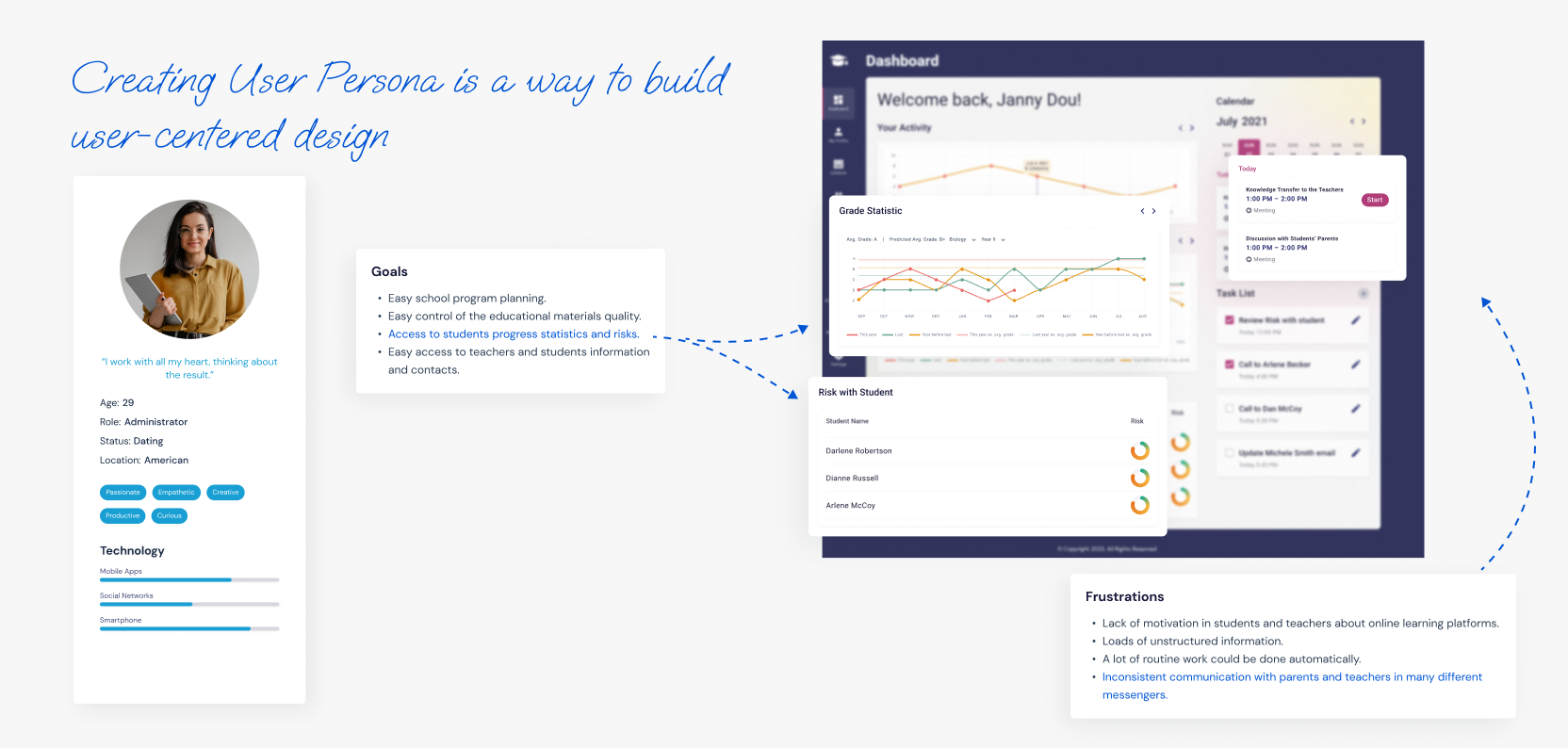User personas are an important part of the research process that can help during software prototyping, marketing, scaling, optimizing, etc. It is a versatile tool that uses data from potential customers to enhance the user experience.
These are fictional profiles of people who have their interests, behavior patterns, goals, motivations, and frustrations. They provide a lot of insight into the user base. But how can you see that user persona will benefit your business directly? What are the tangible metrics that make it a worthwhile investment?
In fact, there are multiple ways to gain benefits from well-made user personas. The magnitude of each one depends on the business and goals you’re pursuing. But this list of strong suits offers a look at how valuable this technique can become.
Help the team see the users in the same light
Each person has their own unique experience and knowledge. No matter how hard we try to stay open-minded, stereotypes and generalizations will always have a place in our brains. That’s how the mind works – optimizing the data we store often at the expense of remembering unique personalities and exercising empathy.
Without the research data put into a form of a user persona, each team member will have an opinion coming from their own experience. A profile that describes behavior, personality, demographics, and more will help everyone see the issues from the same perspective. This helps to increase the focus on a collective target, boosting efficiency and increasing product quality.
Simplify design decisions
Software development can go south during many stages. And one of them is design. How do you make something and be sure that the users end up liking it? A big part of success in this regard is about designers identifying themselves with the target audience.
User persona allows each team member to see the clear goal – to solve a certain challenge that the users have. It narrows down the margin and speeds up the decision-making process. User personas help highlight the needs of the customers and see the product from the user’s perspective.
More importantly, it helps prevent common mistakes like separate team members developing the product for different people. Each of them will have a separate definition of your target audience, creating chaos and harming efficiency.
Visualize research data
Say, you have just conducted a survey among 20 users from your target audience, with varied answers, sometimes even contradictory to each other. How do you make sense of all the information? How can you determine what’s a real problem and what’s a potential scaling option down the road? And all of this has to be communicated to the development team in a crystal-clear way to avoid misunderstandings.
UX designers might see the patterns the developers don’t, and vice versa. Visualizing the insights through a user persona is a good way to present the information in a simple-to-comprehend manner. And streamlined progress saves time and money.

Create a user-centric experience
By offering a similar perspective to the team members, user personas contribute to a good user experience. By allowing every employee to wear the shoes of a customer, you create an environment where people do not just build a product. They create a solution to the pain points they understand and relate to.
A good product doesn’t just allow customers to get a certain service. It allows them to get the experience they truly desire. The user-centric approach is a general motive throughout a good product development process, and user personas are a vital part of it.
Adapt to user habits and behavior
Each user is a unique person with a unique life experience. It results in specific behavior patterns and habits that can affect their interaction with your product. They may like what you’re offering but aren’t really used to the way your product works, for example. It differs based on the industry, demographics, platforms, and many other parameters.
User personas allow you to notice these patterns and apply them to the product. It offers great flexibility in personalization, which positively impacts user experience. It then leads to a better understanding of the target audience as a whole, helping further design methods.
The Takeaway
As with most things in software development and design, the biggest benefit of user personas is the one that aligns with your business needs. A good product is a balanced fusion of a user-centric approach and your business goals.
User personas help the team to look at the whole process from the customer’s perspective. It unlocks a better understanding of the end goal and allows highlighting the behavior patterns and pain points. You can later use it to build software that connects with the target audience, offering an experience that matches their needs.